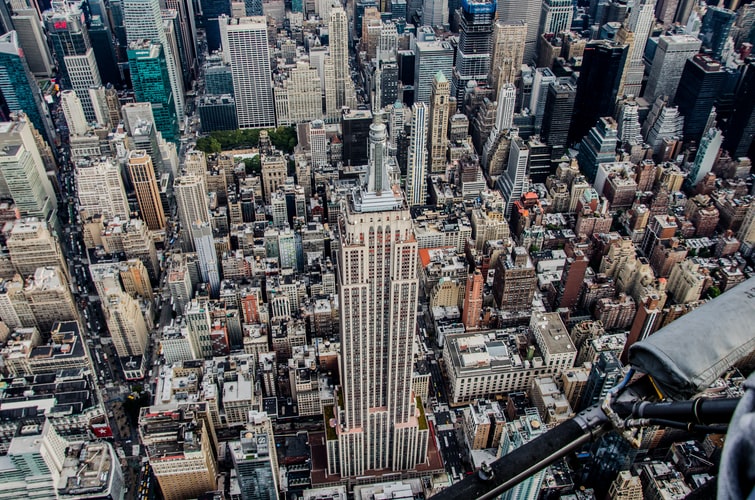
(Foto Unsplash/Anthony Rosset)
Sadly, the corona virus claimed the life of Michael Sorkin, one of the smartest, most observant urban critics I ever had the pleasure to meet and to read. He was acute and acerbic, erudite and witty, and all the things that anyone writing about cities would aspire to be. His passing brought me to reread his wonderful book ‘Twenty Minutes in Manhattan’ (2009). I found these observations on rooftops in Manhattan which particularly struck me as we prepare for Stadsleven ‘Het Dak Op’ on Sept. 4th. Thank you Michael for all your wisdom through the years – Tracy
By Michael Sorkin
“Standing on our rooftop in the Village, I can survey many other rooftops. On a summer day, I often see sunbathers soaking up rays on what is affectionately called “tar beach”, since the majority of rooftops around our building are covered in rolls of roofing paper, sealed with hot tar. Such ‘built-up’ roofing is an inexpensive, reasonable effective, but fragile and ultimately primitive technology. It suggests that in most of our buildings, roof is residue, invisible space, mere barrier membrane.
But the roof is invisible only because we are accustomed to looking at it from the point of view of the street. If one were to fly over the city at low altitude, the roofs would be our urban foreground. It is precisely this kind of visibility that is opened up when we incorporate a distaff way of seeing – like a helicopter or spy satellite. This possibility has led, in Los Angeles and elsewhere, to the painting of enormous house numbers on rooftops to facilitate police surveillance and coordinate strategies of search and capture throughout the city. Paul Virilio has argued that the view from above has reconfigured the very epistemology of space, remaking the world as a target.
Parkland
Imagine, instead, that our rooftops were parkland, that the area of ground occupied by building was, in effect, simply displaced upwards. Imagine that the city enacted legislation requiring that the equivalent of 100 percent of the surface area of New York were to be green. A 100 percent requirement would not simply oblige green roofs. It would also demand that compensatory greenery be added to make up for such ungreenable areas as roadways, runways, and other unplantable places. Perhaps the requirement would be satisfied with road narrowings, cantilevered gardens, or green floors in buildings. Perhaps there would be a market for the exchange of green rights or the construction of towers devoted to the provision of fungible green space.
If such aerial parkland were linked by bridges or by a more continuous building form, an entirely new kind of public space would be created. Top and bottom would have their relationship recast. An apartment dweller might, of a morning, leave her place and go up the stairs to the second grade. A leisurely stroll through an aerial parkland might bring her to her workplace or to her friend’s apartment, where she would re-enter the building and walk downstairs.
Needless to say, such a fantasy requires a fairly dramatic rethinking of the nature of property lines and the character of vertical connections.
Green roofs would surely be beautiful – in a city of towers, large numbers would down on them – and they would provide leisure space for tenants of their buildings. They would also have a profoundly mitigating effect on the so-called urban heat island problem. The capacity of what Olmsted called the urban ‘green lung’ would be vastly increased.”

